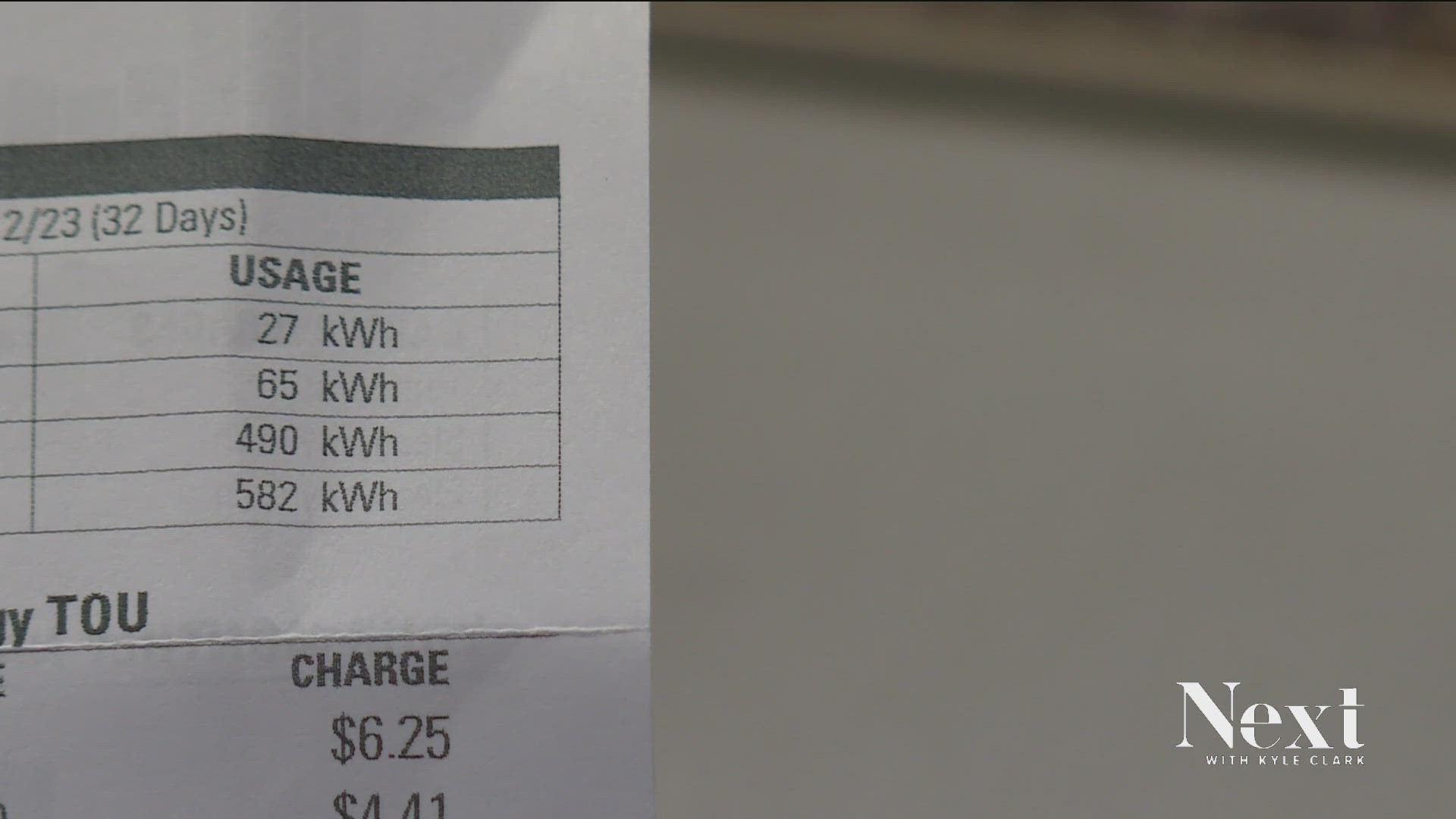DENVER — Our recent weather pattern may not be ideal for barbeques and professional fireworks displays, but it sure has helped people save money on water and electricity usage.
Xcel, and other utility companies, can charge more for electricity on weekday afternoons and early evenings because of new Smart Meters.
Gary for Northglenn emailed NEXT saying that he opted for flat rate pricing 24 hours a day. When he got his next bill, to see if he made the right choice, he said Xcel stopped sharing certain information.
“I received my new smart meter the first part of 2023. During the next couple of months, I was able to determine, thanks to you, that my electricity usage charges were within a couple of dollars using either rate. My concern was during the summer months with my lifestyle I would be better off with the opt out rate. After a lot of thought, I called and switched to the opt out rate. When I received the next bill there was no breakdown of my electric use during the three ‘peak’ periods like on previous bills. Therefore, going forward, I would not be able to make a comparison to determine if I had made the right choice,” Gary wrote. “Although I realize I cannot make any rate changes for one year, it would be nice to be able to do a month-by-month comparison to determine if I did in fact make the right choice. I would think Xcel would be able to provide this information if they wanted to since it is Xcel’s ‘smart’ meter.”
Time of use billing charges customers more money per kilowatt hour during peak times.
On-peak is 3 p.m. to 7 p.m. on weekdays. This is the most expensive time period. From June to September, this rate is 17.3 cents per kWh. (From October to May, this rate is 10.9 cents/kWh).
Mid peak is 1 p.m. to 3 p.m. on weekdays. From June to September, this rate is 11.8 cents/kWh. (From October to May, this rate is 8.6 cents/kWh).
Off-peak is 7 p.m. to 1 p.m. on weekdays, all day on holidays and all day on weekends. From June to September, this rate is 6.4 cents/kWh. (From October to May, this rate is also 6.4 cents/kWh).
Opting out to a flat rate during the summer months of June to September is calculated at 8.4 cents per kWh. (From October to May, the flat rate is 7.1 cents/kWh).
If you opt out to a flat rate, you have to stay on a flat rate for one year. Gary wanted to be able to calculate if he made the right choice, but his flat rate bill no longer breaks down his usage by time period.
In an emailed statement, an Xcel spokeswoman said providing that breakdown for a flat rate customer is not possible.
“We’re happy to provide our customers with the ability to track their electric energy use in near-real time through their Smart Meter. This gives them more control over their energy use and their bill, especially if they choose to stay with the Time of Use (TOU) rate.
As you know, the TOU rate offers a variable rate that more accurately reflects the cost of generating electricity. Customers who have a smart meter installed are rolled on to TOU twice a year, depending on when their new meter is installed. They also have the option to opt out of the TOU rate and be placed on a flat rate. When they choose to switch to the flat rate, the meter will only be configured to calculate a flat rate bill. At this time, we don’t have the capability, either online or on our bill, to display two different rates for one specific meter.
We understand customers want to better understand their energy use and how it impacts their bill. We recommend that if customers want to compare a TOU bill over a flat rate bill, that they stay on TOU for a full 12 months. They can then compare their TOU rate against the flat rate.
Time of use would benefit a customer when they use most of their energy off peak. Flat rate might benefit a customer if they are energy hogs during the week between 1 p.m. and 7 p.m.
Time of use versus flat rate, however, is not designed to save customers money.
The Colorado Public Utilities Commission has a website explaining time of use rates. One of the questions the PUC asks and answers is: Is the transition to time of use rates an overall rate increase for Xcel?
Here is the answer: “No. The time of use rate is designed to collect the same amount of revenue as the rate it replaces. The average customer will pay the same amount over the course of a year on the time of use rate as they do on their existing rate. Whether an individual customer pays more or less on time of use depends on the timing and volume of their particular electricity usage.
The purpose of the program is to encourage conservation during the time of day when most people tend to use electricity, not to be a cost saving measure for customers.
“The purpose of time of use rates is to provide rates that more accurately reflect the actual cost of operating the electric system,” the PUC writes. “It also promotes fairness by ensuring that customers pay in proportion to how much they contribute to the costly system peaks.”
Calculate your own rates here:
Xcel winter calculator:
Xcel summer calculator:
SUGGESTED VIDEOS: Your Xcel bills

